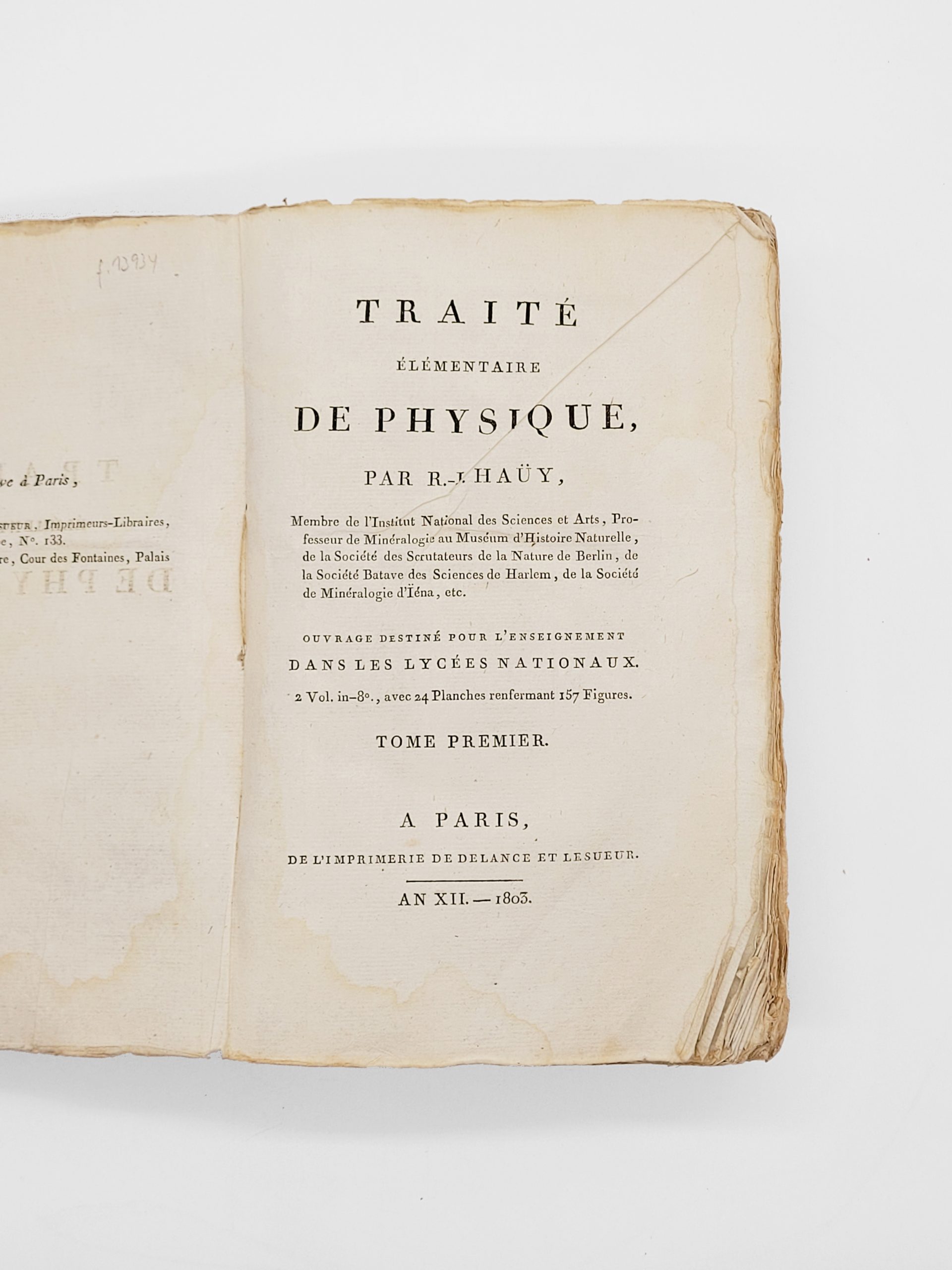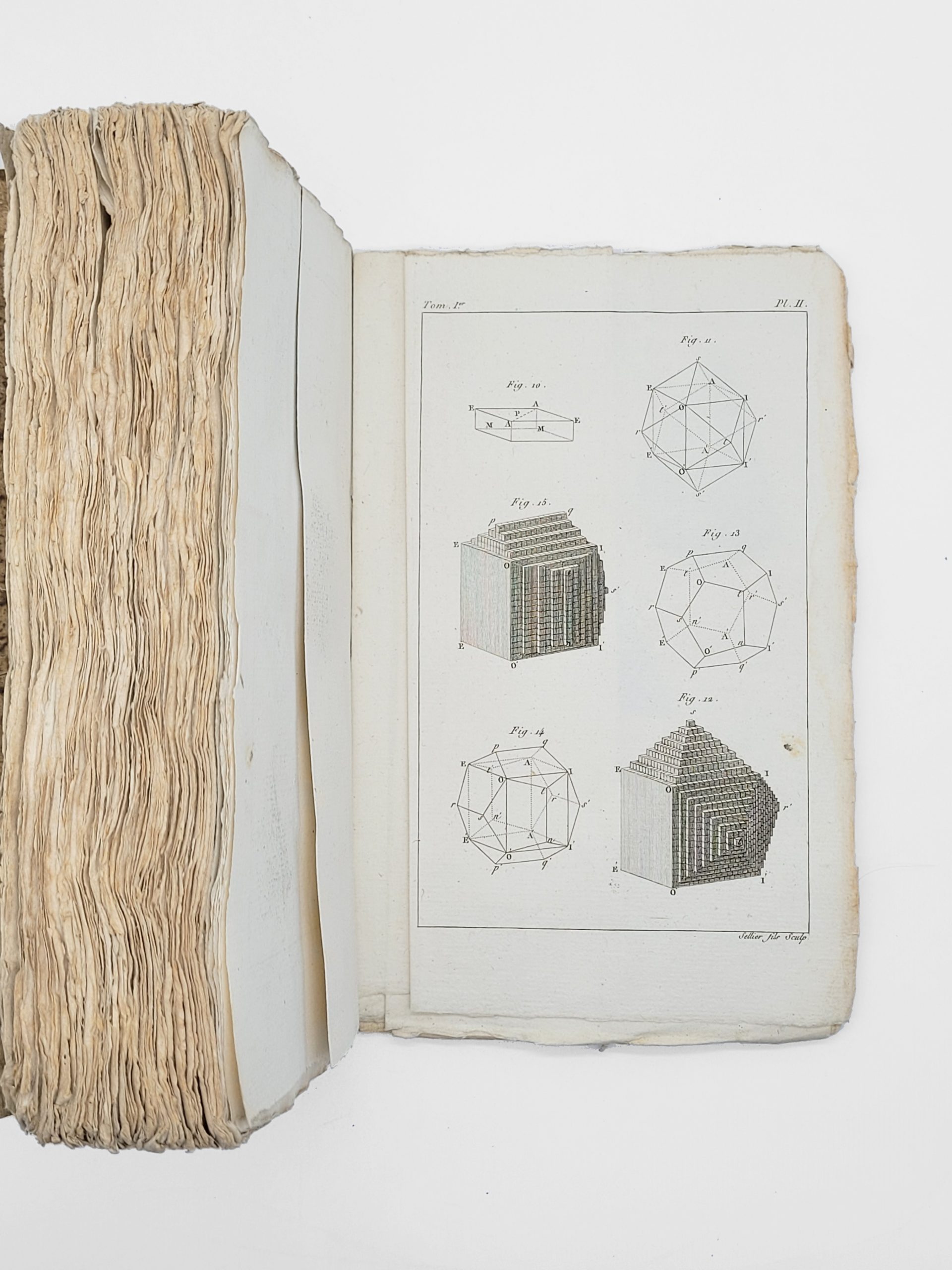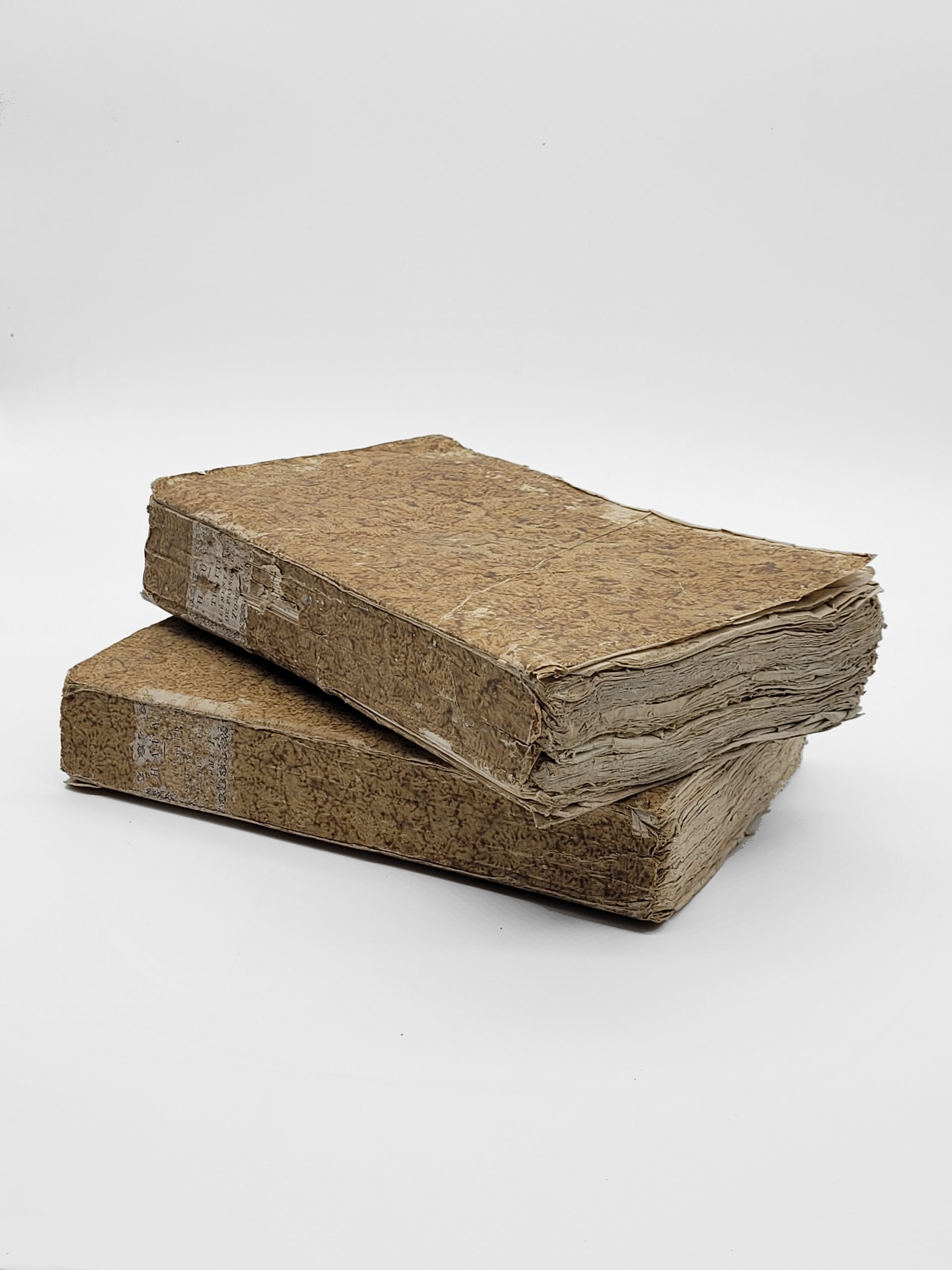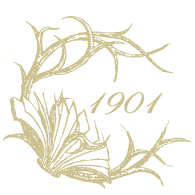HAÜY abbé René-Just Traité élémentaire de physique. Ouvrage destiné pour l’enseignement dans les lycées nationaux.
VENDU
2 volumes in-8 (215 x 137 mm) de 3 ff.n.ch., XXIV, 426 pp. pour le tome I ; 2 ff.n.ch., III, 447 pp. pour le tome II. Broché, couvertures de papier marbré.
1 en stock
Gartrell, 242 ; Wheatland, 111 ; Neville, I, 603. Voir Wheeler-Gift, 684 (seulement la traduction anglaise, Londres 1807).
Édition originale.
Très apprécié de Napoléon, après le rétablissement du culte, l'abbé Haüy, qui avait été professeur dans tous les grands organismes d'enseignement de la Révolution, fut nommé chanoine honoraire de Notre-Dame en 1802. C'est l'empereur qui lui commanda la rédaction de cet ouvrage d'éducation.
"Napoléon ordered [Haüy] to write a textbook of physics for the newly instituted lycées. This book was outstanding for its clear, methodical exposition of physics, although mathematical treatment of problems was again lacking. Like most of his contemporaries, Haüy adhered to Newton's corpuscular theory of light and to the theory that heat was caused by a 'caloric matter'. His own contribution to physics consisted in his researches on double refraction on crystals, on pyrolectricity in crystals (especially tourmaline and boracite), and on piezoelectricity. Haüy's Traité de physique brought him appointment to the Legion of Honor in 1803" (DSB). "There are large sections on electricity and magnetism, and this work is also of some chemical interest. The book is divided into 905 paragraphs, each covering a specific topic" (Neville).
Les 24 planches gravées sur cuivre représentent des expériences.
Auréole au début du premier volume, sinon bon exemplaire dans son brochage d'origine.








